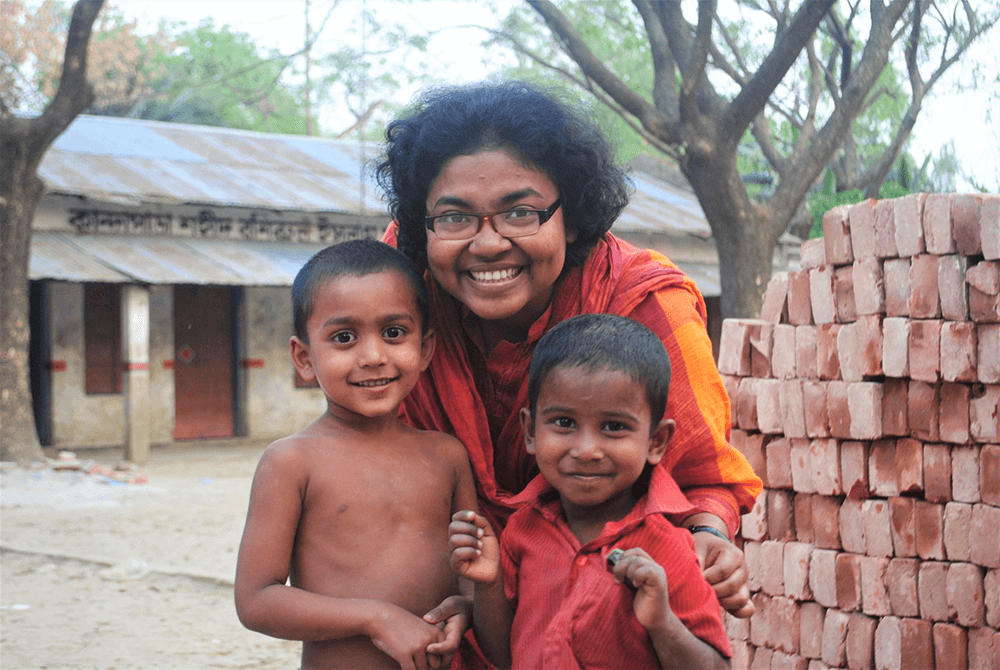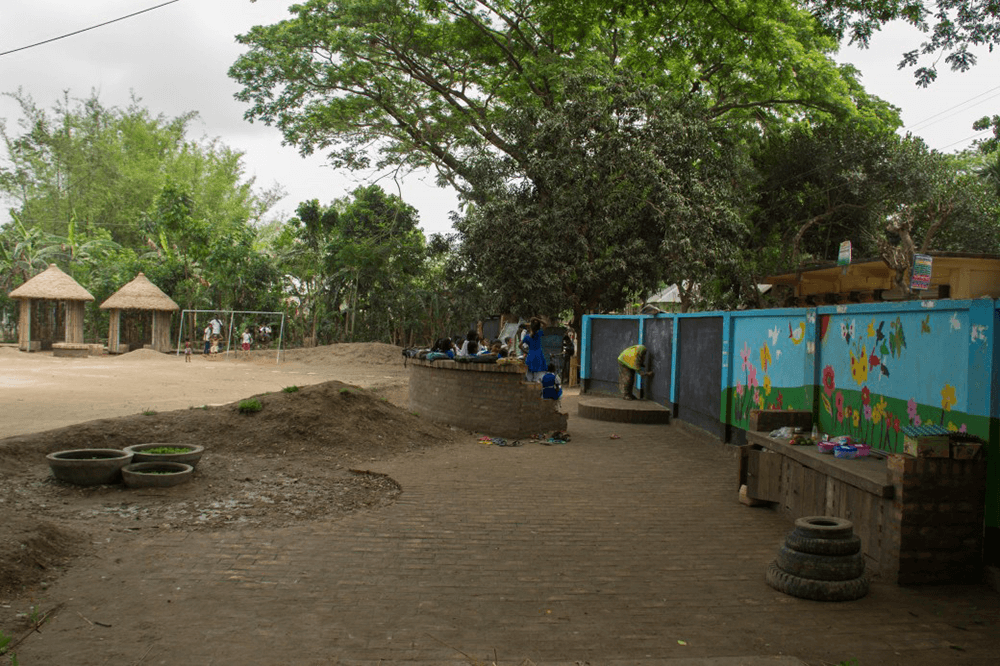
Twitter: @Mishtush
LinkedIn: Matluba Khan
I come from a family of educators. My father was the principal of a primary teachers’ training institute and all my elder sisters teach in public primary schools. As a kid I was curious and interested in all subject areas. This might be one reason why I studied architecture, a discipline which is perceived as one that brings together arts and sciences (both physical and social). On the one hand I was inspired by the opportunities architecture study could bring me in terms of working with allied disciplines; however, I was also frustrated by the fact that, to date, architecture in most countries only serves a specific group of people – aka the wealthy and able. I wanted to use my knowledge of architecture to serve people from all levels of life, particularly those who are the most vulnerable.
Growing up with teachers at home, I have come to know how constrained teachers are in primary schools, not only in terms of time but also in the space where they teach children. I was privileged to have received my primary education in the experimental school run by the Primary Teachers Training Institute, so you can imagine how deeply saddened I was when I found out that the kids in most public primary schools in Bangladesh study in insufficiently lit, ill ventilated and overcrowded classrooms. The school grounds scarcely provide any opportunity to engage in physical, social and cognitive play. Knowing this has made me think about how important it is to have a favourable environment in early years when most formation happens and hence, why, for my undergraduate final year thesis, I looked into the design of public primary schools, exploring what criteria in such a place can help children develop. The study was underpinned by the theories of child development and educational philosophies of Maria Montessori, Rudolf Steiner and Reggio Emilia and I eventually came up with a standardised design solution that can be adjusted to different site conditions and implemented in all primary schools.
As a fresh graduate I started working in an architecture consultancy firm. Whilst spending numerous hours aligning the columns and drawing the details for doors and windows in an ongoing project, I reminisced about the time I spent researching children’s spaces for my dissertation. The thought of my dissertation and the design for children’s learning environments being locked on a shelf in the library was appalling to me. I realised that I love to research but, more than that, I want to bring changes to children’s lives into the actual world – I want to act to see those ideas taking shapes in real life.
Along with continuing to work in the architecture firm to gain practical experience, I became a lecturer in the department I graduated from and enrolled myself in the Master of Architecture program (by thesis). Whilst deciding on an idea for my masters dissertation, I was involved in an action research project to develop a neighbourhood play area for children with my university colleagues. These were the people who first exposed me to the wonderful world of participatory action research! We lived on different floors of the same building in the residential area for teachers, overlooking a small play area with a broken slide, where children spent their afternoons (although obstructed by parked cars most of the time). Our goal was to develop that area to create opportunities for more physical, social and imaginative play, directly engaging with the children who were the principal users of the space. We developed the design by working on the children’s wonderful illustrations of what they wanted in the area and presented the design to the residents’ environment committee… only to find that, disappointingly, a carpark won over the children’s play area. I began to dread coming home in the afternoons when children were at large, not having the courage to face those who we promised an area for play and recreation (which is their right, of course, as specified in Article 31 of the UNCRC). This experience has had a great influence on my future projects and my aspiration of founding an organisation which will work on creating spaces for children.

Another primary school ground I co-designed and developed with children, teachers, local architects and the community in 2014-2015 (recipient of EDRA Great Places Award 2016 and ASLA Honor Award 2017) (Image Courtesy of Goopi Bagha Productions)
Going back to my masters project, and as a result of what I learned whilst designing the above play area, I decided to design an outdoor classroom and evaluate the design for children’s academic attainment and associated social variables. The more I dug into the literature of children’s education and environment, the more it made me bewildered with how disconnected the disciplines are in researching children’s environments, and how apart in their works design professionals and academic researchers are. For my PhD then, I decided to bring all of these people together. I co-designed and developed a whole school ground with children, teachers, architects and the community, and evaluated the intervention and the design for children’s academic attainment, motivation, pedagogy and play. This was not an easy ride and there was not much support in terms of execution of an interdisciplinary action research project of this scale. It was when the school ground was built and the children appreciated that their voices were heard and reflected in the design, that I felt I could bring a little bit justice to those children in that residential area from before. At the same time however, this work was only done in one school. There are 38,568 more public primary schools in Bangladesh and a million more in the world that need their outdoor spaces developed!
Both during and after my PhD I have worked closely in projects engaging with children in the UK and Europe. I was not that surprised though to find out how universal children’s needs are and how similar the barriers and challenges in different contexts are in terms of engaging children in the processes of design and planning and executing the design whilst being true to children’s preferences. Disciplinary silos and disconnectedness from practice being the mostly cited vices, after my PhD I organised a conference with colleagues at Edinburgh University to bring researchers and practitioners together who work with and for children. The aim was to create a network of researchers and eventually a vehicle to create better environments for children. It was here where I first met Jenny, only to later find out that we are both haunted by the barriers and stimulated by the opportunities to make children’s lives better. As a result, it only made sense to co-found ‘A Place in Childhood’ working towards making sure no child is unheard or left behind.
